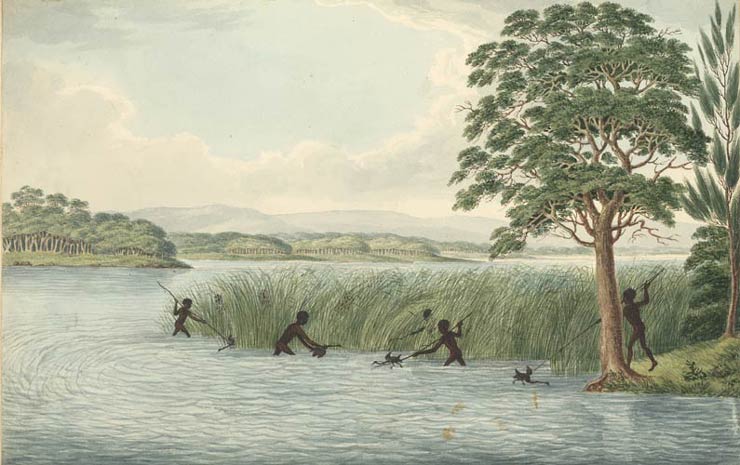Due to scheduled maintenance on Friday 19th April 2024 between 7:00PM and 9:00PM AEST, the Scootle website may face disruption in service. We apologise for any inconvenience caused.
 Indigenous Australians hunting black swans, c1817
Indigenous Australians hunting black swans, c1817
TLF ID R4022
This is a 17.5 cm x 27.7 cm watercolour of Indigenous Australian people hunting black swans among reeds near the water's edge of a large river. One man is holding a bird that is trying to escape and three people are spearing birds. At least four other people are almost fully obscured by the reeds. The river is surrounded by a lush, verdant landscape and a mountain range can be seen in the distance.
